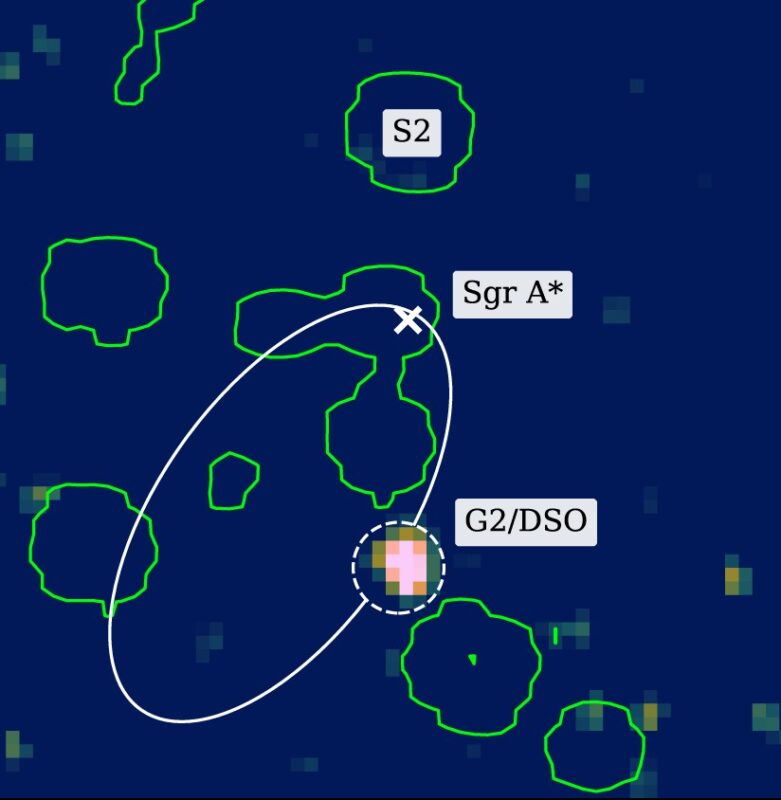Now Reading: Our solar system is moving 3 times faster than expected
-
01
Our solar system is moving 3 times faster than expected
Our solar system is moving 3 times faster than expected

This video shows our solar system moving through the galaxy. The view is from a hypothetical vantage of a typical interstellar object in the sun’s vicinity. Illustration via Tony Dunn at Orbit Simulator. Read more: The motion of the solar system through our galaxy.
Our solar system is moving faster than expected
Our solar system was thought to be moving at around 515,000 mph (828,000 kph) through space, as it orbits the center of our Milky Way galaxy. But a new study from researchers at Bielefeld University in Germany suggests our solar system is moving more than three times faster than that. The researchers said on November 13, 2025, that the new findings challenge the established standard model of cosmology.
How can our solar system challenge a cosmoloigical model? The speed of our solar system around the galaxy’s center has implications for the rotational speed of our galaxy as a whole. And if our galaxy is rotating faster than expected, it might suggest other galaxies are, too. The lead author of this new study, Lukas Böhme of Bielefeld University in Bielefeld, Germany, confirmed:
Our analysis shows that the solar system is moving more than three times faster than current models predict. This result clearly contradicts expectations based on standard cosmology and forces us to reconsider our previous assumptions.
The journal Physical Review Letters published the peer-reviewed study on November 10, 2025.
How do astronomers measure our solar system’s speed?
So, how can astronomers determine just how fast our solar system is moving? They do so by looking outside our galaxy. In this study, the astronomers focused on radio galaxies. These are galaxies that produce strong signals at radio wavelengths. Radio waves can pass through obscuring dust that visible light can’t penetrate.
Due to the motion of the solar system through space, we see slightly more radio galaxies in our forward direction through space. These researchers referred to a headwind:
As the solar system moves through the universe, this motion produces a subtle ‘headwind’: slightly more radio galaxies appear in the direction of travel. The difference is tiny and can only be detected with extremely sensitive measurements.
Or think of a car. Just as you wouldn’t judge a car’s motion by looking inside the car but instead at objects outside the car, astronomers look outside our galaxy – at distant radio galaxies – to gauge our motion. As the “car” (our solar system) moves forward, you see rain moving at your windshield (external radio galaxies) more easily than rain falling behind the car. This bias toward our direction of motion is what astronomers called a headwind of radio galaxies, which can be detected by sensitive-enough instruments as our solar system moves through space.
For this study, astronomers used two radio observatories plus the Low Frequency Array (LOFAR), which is a network of radio telescopes spread across Europe. With these data, the scientists made the first-ever precise count of radio galaxies and their distribution.

What did they find?
Their results showed an unequal distribution of radio galaxies. The deviation from what they expected to what they saw was more than 5 sigma. This is scientist-speak for something that is statistically significant and not a matter of chance. In fact, the unequal distribution of radio galaxies was 3.7 times stronger than what the standard model of the universe predicts.
How does the standard model of cosmology factor in to the results? The standard model of cosmology – aka the lambda cold dark matter model – is scientists’ best idea of how our universe works. One of its assumptions is that matter is distributed relatively equally wherever you look. Co-author Dominik J. Schwarz of Bielefeld University said:
If our solar system is indeed moving this fast, we need to question fundamental assumptions about the large-scale structure of the universe. Alternatively, the distribution of radio galaxies itself may be less uniform than we have believed. In either case, our current models are being put to the test.

Bottom line: A new study suggests that our solar system is moving three times faster than expected. The new result might conflict with the standard model of cosmology.
Source: Overdispersed Radio Source Counts and Excess Radio Dipole Detection
The post Our solar system is moving 3 times faster than expected first appeared on EarthSky.
Stay Informed With the Latest & Most Important News
Previous Post
Next Post
-
 012024 in Review: Highlights from NASA in Silicon Valley
012024 in Review: Highlights from NASA in Silicon Valley -
 02Panasonic Leica Summilux DG 15mm f/1.7 ASPH review
02Panasonic Leica Summilux DG 15mm f/1.7 ASPH review -
 03How New NASA, India Earth Satellite NISAR Will See Earth
03How New NASA, India Earth Satellite NISAR Will See Earth -
 04And Thus Begins A New Year For Life On Earth
04And Thus Begins A New Year For Life On Earth -
 05Astronomy Activation Ambassadors: A New Era
05Astronomy Activation Ambassadors: A New Era -
 06From Polymerization-Enabled Folding and Assembly to Chemical Evolution: Key Processes for Emergence of Functional Polymers in the Origin of Life
06From Polymerization-Enabled Folding and Assembly to Chemical Evolution: Key Processes for Emergence of Functional Polymers in the Origin of Life -
07SpaceX launch surge helps set new global launch record in 2024




















